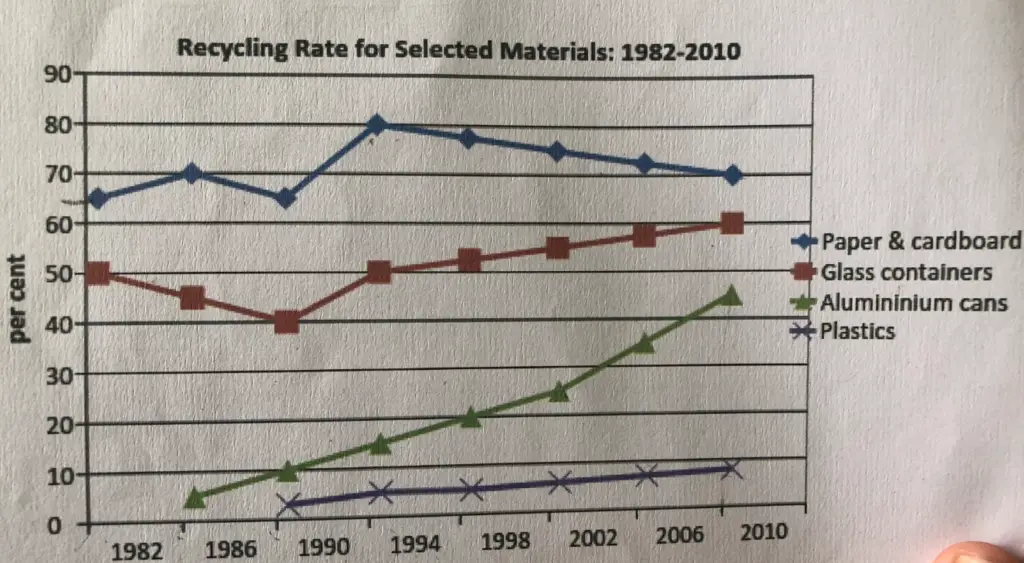Recycling Rate For Selected Materials | Band 8 IELTS Report

Sample report
The graph shows information about the percentage of four different materials recycled in a country over a period of 28 years between 1982 and 2010. Overall, what stands out from the graph is that the recycling of aluminium cans showed an upward trend throughout the period. Another interesting point to note is that paper was the most recycled item throughout the whole period. 65% of paper and cardboard was recycled in 1982. This figure increased slightly over the next four years and then kept fluctuating until 1990. In 1994 as much as 80% of this item was recycled. Afterwards this quantity decreased gradually to 70% in 2010. The recycling of glass containers showed a similar trend. While in 1982, 50% of them were recycled, this figure declined over the next 8 years to 40%. Afterwards, the recycling of glass containers again picked up and in 2010 as much as 60% of them were recycled. The recycling of aluminium cans began in 1986.While only about 5% of them were recycled in that year, they picked up pace over the years and in 2010 almost 45% of the aluminium cans were recycled. Plastic recycling began in 1990 and it remained the least recycled item (less than 10%) throughout the given period.
Need help with IELTS writing? Get your reports, letters and essays corrected by me.